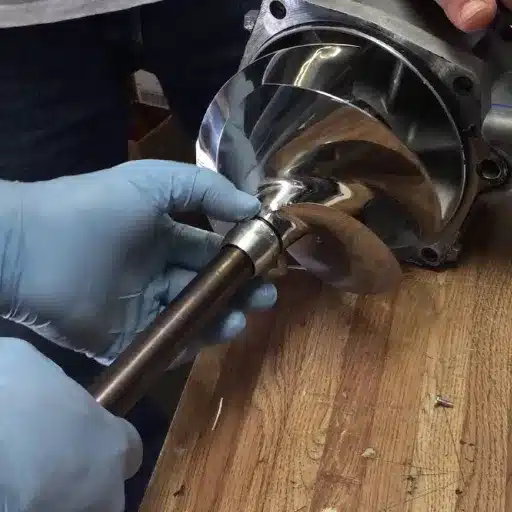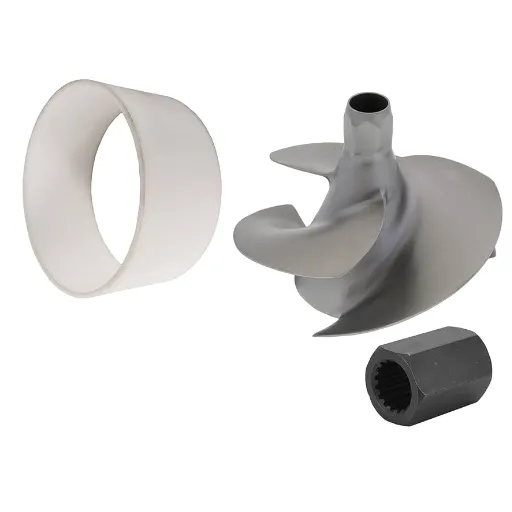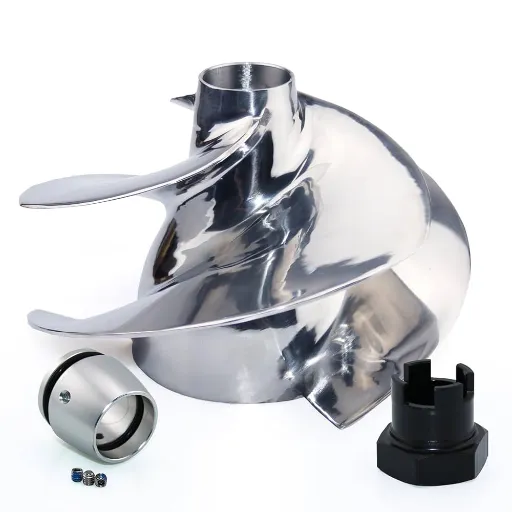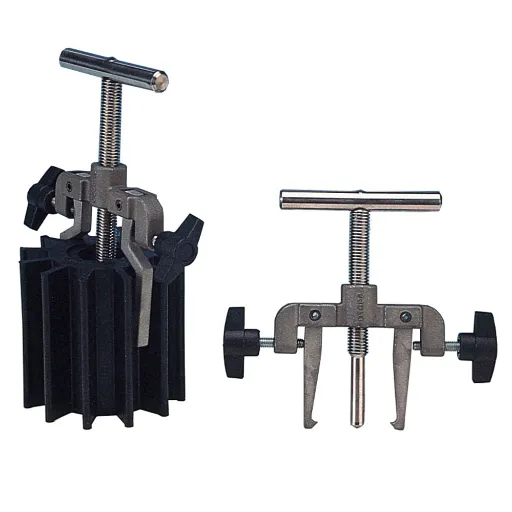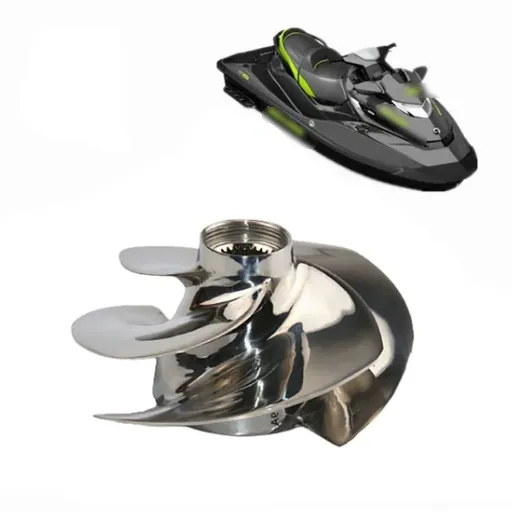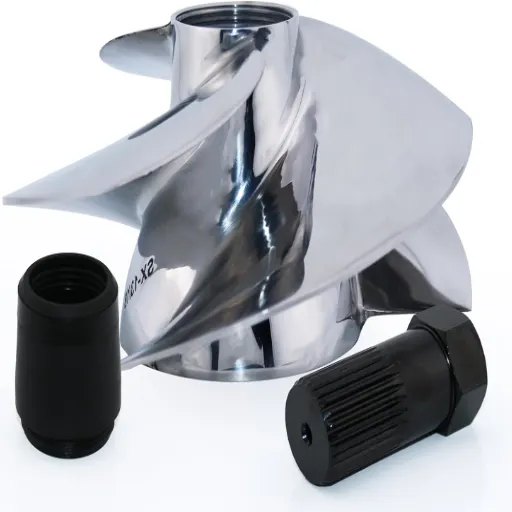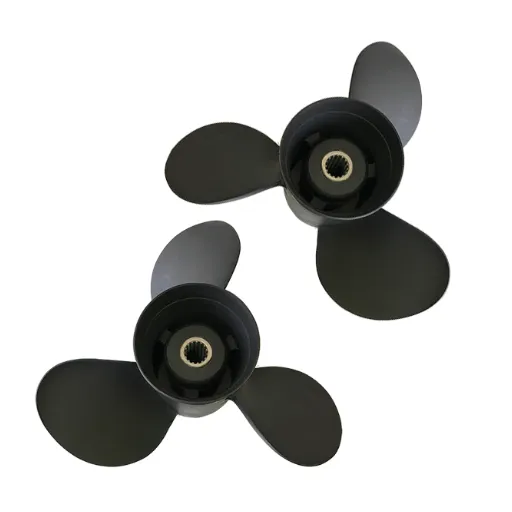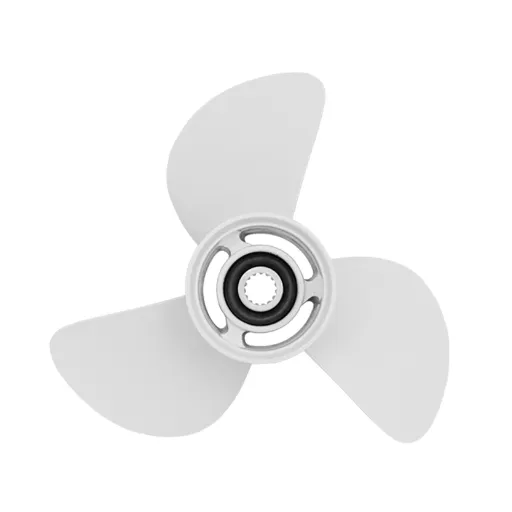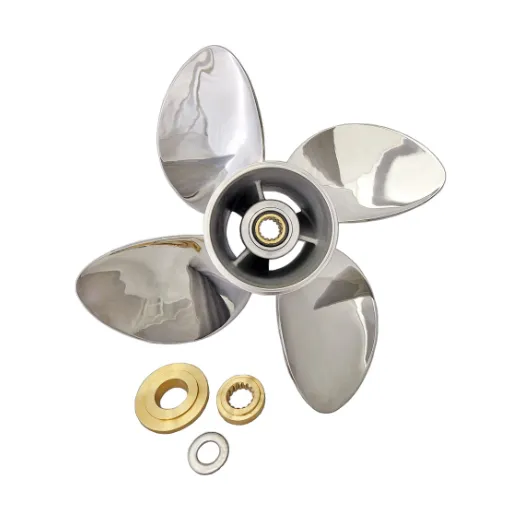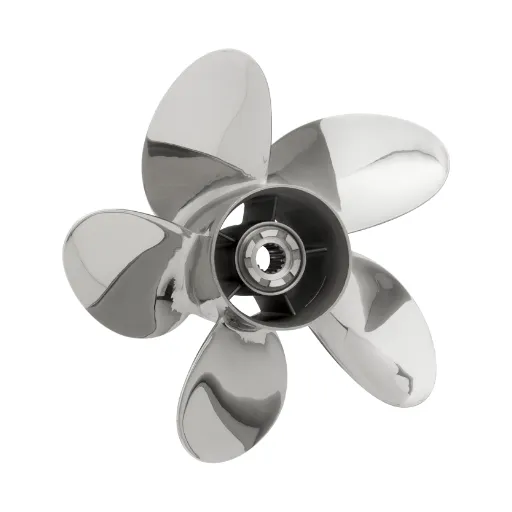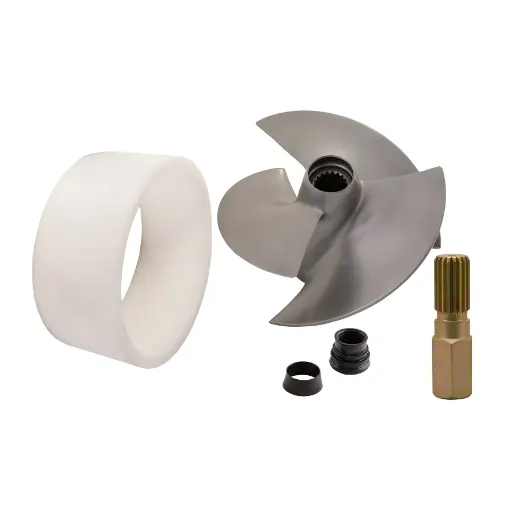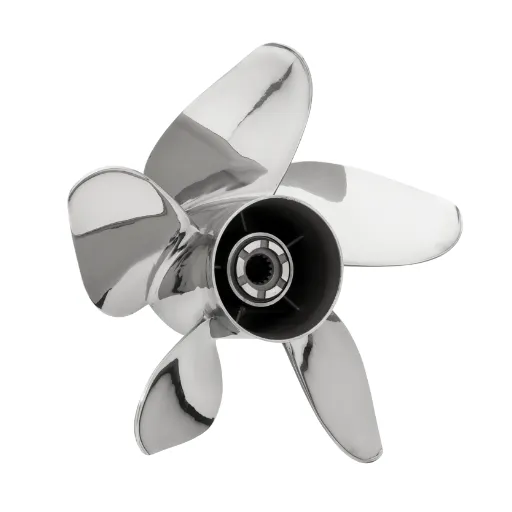The maintenance of the impeller is a critical job that any jet ski owner should be concerned about if they decide to maximize the performance and life of their Yamaha jet ski. The impeller is the core of your jet ski’s propulsion system, and as time passes, wear can significantly impact the speed, efficiency, and overall quality of the ride. This blog post is your ultimate guide to Yamaha jet ski impeller replacement in 2025, covering all the necessary tools, methods, and expert tips to get the job done right. Whether you are an experienced DIYer or a brand-new jet ski owner, this guide will enhance your knowledge and confidence in tackling this essential maintenance task, helping to keep your water-time adventures running smoothly. Read on, uncover everything you need to know to make your impeller replacement successful!
Understanding the Impeller in Yamaha Jet Skis
What Is an Impeller and How Does It Affect Performance?
The impeller is the primary element in any Yamaha jet ski propulsion system, as it transmits engine power into thrust. Situated inside the pump housing, it draws in water from outside the intake grate and then rapidly accelerates it through the nozzle in the direction the jet ski is propelled. Made with durable materials such as stainless steel or aluminum alloy, it should withstand all sorts of rough treatment while accomplishing the highest performance. The design of the impeller, including blade curvature and pitch, will significantly impact the jet ski’s speed, acceleration, and fuel consumption efficiency. Keeping the impeller well-maintained and replacing it when due maximizes jet ski performance and provides an excellent riding experience.
Common Problems with Yamaha Impellers
On impellers that boast of durability and performance, problems certainly do occur due to abuse over time. Damage to blades is the most common problem, often caused by debris such as rocks, sand, or foreign objects being sucked into the pump. It reduces efficiency, speed, and promotes high vibrations during operation. Although air bubbles may form around the blades due to improper water flow, cavitation is another common problem experienced by impellers. There will be a loss of power and even long-term damage to the impeller or its housing if left unchecked.
Rusting is a corrosion issue that requires more attention, especially in saltwater environments. Improper maintenance may cause degradation of the metal parts of the impeller, resulting in adverse effects on performance. Installation mistakes or poor alignment can cause uneven wear and, in some cases, the failure of the impeller itself. Regular inspection, cleaning, and timely replacement are essential methods to prevent common problems and maintain the Yamaha impeller’s smooth operation for extended periods.
Identifying Impeller Wear and Damage
Recognizing signs of wear and damage on a Yamaha impeller is essential for maintaining optimum engine performance. One of the primary symptoms of wear and tear is slow water flow, which can lead to overheating of the engine. This typically occurs when the surfaces of the impellers become worn, cracked, or deformed to the point where they can no longer pump water. Examining the impeller can help detect physical damage, such as irregular edges, tears, or blade thinning.
Additionally, internal impeller damage is indicated by a drop in engine performance or unusual noises during operation. Corrosion, in particular, in a saltwater environment, will cause the metal parts to weaken or seize. Monitoring the engine temperature and conducting regular inspections of the cooling system can help identify such problems in their early stages. Timely action will, in fact, save further damage: impeller replacement if it is badly worn, or rectifying alignment if it is out of line, to avoid operation failure, thus extending the lifespan of the mechanical members. Therefore, regular maintenance intervals are strongly recommended to avoid such risks and maintain optimum performance.
Choosing the Right Impeller Kit for Your Yamaha Waverunner
2005-2015 Yamaha Waverunner Compatible Impeller Kit Overview
It is always important to consider performance, durability, and specific Waverunner model compatibility when selecting an impeller kit for a Yamaha Waverunner manufactured between 2005 and 2015. Impeller kits for this range are typically made from premium materials, such as stainless steel or anodized high-grade aluminum alloys, to ensure resistance to wear and corrosion in harsh marine environments.
Popular Impeller Options:
- OEM Yamaha Impellers: Explicitly designed to meet the original specifications of Yamaha Waverunners, these impellers offer very good performance and reliability and are, therefore, a worthy consideration if you want to maintain your jet ski to factory standards.
- Solas Concord Impellers: These popular aftermarket parts provide the thrust necessary for enhanced acceleration and top-end speed. Their blade design is unique, allowing for maximum efficiency and reduced cavitation to cater to those seeking enhanced performance.
- Skat-Trak Impellers: Custom-tailored to suit everything from recreational riding to all-out competition, these impellers allow for maximum customization to meet precision pitch requirements and configurations, extracting maximum performance from the watercraft.
- Riva Racing Impellers: Engineered for aggressive acceleration and top speed, Riva Racing impellers are meant for the high-performance crowd. These impellers are often installed in performance-upgraded Waverunners and feature a precision-machined design to enhance power transfer further.
Researching into and selecting the right impeller kit for your Yamaha Waverunner will definitely make a big difference in its performance, efficiency, and longevity.
Comparison of VX110 and SVHO Impeller
| Feature | VX110 Impeller | SVHO Impeller |
|---|---|---|
| Design Focus | Fuel efficiency and smooth cruising | High performance and aggressive riding |
| RPM Range | Low-to-mid RPM thrust | High RPM performance |
| Pitch | Conservative pitch | Steepest pitch |
| Target User | Recreational riders | Competitive riders and enthusiasts |
While reviewing the VX110 and SVHO impeller options, one should really examine the intended performance characteristics under riding conditions for which they were designed. VX110 impellers are designed to work best with a stock or slightly upgraded Yamaha Waverunner, focusing on fuel efficiency during smooth cruising and reliability. They generally opt for a more conservative pitch to increase low-to-mid RPM thrust, as opposed to high RPM. This suits the average recreational rider who wants to enjoy a chill ride balanced with some level of speed and endurance.
Conversely, SVHO impellers are designed for high-output engines and focus more on acceleration, top-end speed, and aggressive riding. These impellers tend to exhibit the steepest pitch, with blade geometries fine-tuned for maximum thrust and water displacement at the higher RPMs. Competitive riders or serious enthusiasts will want to run an SVHO impeller to extract the last drop of performance from their watercraft.
Ultimately, an impeller selection between a VX110 and an SVHO will be based upon what specifications your Waverunner has, what riding style you prefer, and what characteristic of performance matters most to you. Both choices have their own advantages when it comes to enhancing the capabilities of your Waverunner, depending on your specific needs.
Performance Impeller Upgrade Benefits
Key Benefits:
- Enhanced Acceleration: Quicker takeoff from standing start, ideal for water sports and racing
- Increased Top Speed: Optimized blade designs minimize drag and maximize efficiency
- Improved Fuel Economy: Reduced cavitation and smooth water displacement
- Superior Durability: Advanced materials like stainless steel resist wear and maintain performance
An impeller upgrade can significantly enhance the performance of your Waverunner under various riding conditions. An impeller designed for improved performance enhances acceleration, resulting in quicker takeoff from a standing start, which is particularly useful for riders who enjoy water sports or racing. Among other benefits is the increase in top speed, achieved through blade designs optimized for minimum drag and maximum operating efficiency in the water. Another plus is improved fuel economy, achieved through impeller upgrades that prevent cavitation and smooth water displacement, working to your advantage by maximizing cruising time and minimizing refueling breaks. Modern impeller designs are highly resilient, made from advanced materials such as stainless steel, which are better suited to resist wear and tear and have become performance-retentive with age. Given speed, efficiency, and durability, the impeller upgrade is worth it for your Waverunner.
Tools and Techniques for Impeller Replacement
Yamaha Jet Ski Impeller Overhaul: Must-Have Tools
Having the right tools is necessary for a smooth and efficient impeller replacement on a Yamaha jet ski. Some of the tools are listed below:
🔧 OEM Impeller Tool
This specialized tool enables impeller removal and installation at your end without damaging the thread or internal workings.
🔩 Spline Tool
Secures the driveshaft in place, minimizing unwanted movement during the replacement process.
⚙️ Torque Wrench
An accurate torque specification is necessary to make sure the impeller is installed securely but not overtightened.
🔧 Socket Set
You will find all types of sockets useful, including those in metric sizes that will be used to remove bolts and fasteners.
🛡️ Marine Grease
Applying marine grease during assembly helps parts fit together smoothly and prevents corrosion due to exposure to water.
🔥 Propane Torch (optional)
Sometimes the lights can really help when the bolts are particularly tight or corroded, so they are slightly heated to loosen them.
🔨 Rubber Mallet
The rubber mallet is an excellent tool for gently dislodging stuck parts. It really does low-impact damage.
🧤 Safety Equipment
The paramount thing is to stay safe, and for that reason, gloves and goggles should be worn at all times.
With these tools ready, along with the proper knowledge on how to perform the task, your Yamaha jet ski impeller change will be a breeze, allowing for maximum watercraft performance and longevity.
Stepwise Instructions for the Impeller Replacement
-
1
Prepare the Work Area
First, ensure a clean and stable workspace. It is advisable to tend to your jet ski on a flat surface to prevent accidental movement during the process. Disconnect the battery to avoid electrical hazards while working.
-
2
Drain the Jet Ski
Remove any water from the hull by fully draining it. This allows for a less messy and smoother working process. It is wise to check for residual water in hard-to-reach places and dry the water thoroughly.
-
3
Remove the Jet Pump Housing
Find the bolts holding the jet pump housing to the hull and unscrew them. Gently pull the housing away from the jet ski. You should not tamper with connecting parts, such as the drive shaft. The exact positions of these bolts can be found in your Yamaha user manual.
-
4
Disassemble the Impeller
With the jet pump removed, use the spline tool and impeller wrench to remove the impeller gently. You may want to use a vice to hold the housing firmly while doing this. Proceed slowly to avoid stripping threads or damaging the impeller shaft.
-
5
Inspecting the Impeller and Housing
Before installing a new impeller, wash and inspect your old one to determine if there are bent blades or debris buildup. Inspect for any signs of scoring or damage to the surrounding housing and the wear ring, and replace them if found. Clean, well-maintained housing ensures maximum productivity.
-
6
Installing the New Impeller
At this point, the new impeller will be attached using the same tools used for removal, and it will be tightened to the torque specification specified in the manufacturer’s manual to ensure efficient operation without straining the motor. Grease the moving parts gently with marine grease for smooth operation if necessary.
-
7
Reinstalling the Jet Pump Housings
Begin reinstalling the jet pump, fastening it with the original bolts. Align all parts carefully, giving particular attention to ensure that the drive shaft and impeller are correctly aligned. Reconnect any hoses or fittings you withdrew during disassembly.
-
8
Test the Jet Ski
Reconnect the battery and test the jet ski in a controlled environment. Allow the jet ski to run for a short while to ensure smooth operation, then listen for any unusual sounds. If it runs smoothly through, set your jet ski for water activities.
By carefully following these steps, your Yamaha jet ski will perform at peak ability and reliability. Continued maintenance, including regular inspections of the impeller and replacement as needed, is crucial to the longevity of your watercraft.
Safety during the Replacement Procedure
⚠️ Critical Safety Guidelines:
- Disconnect battery first to prevent electrical hazards
- Wear protective gloves and safety goggles
- Ensure well-ventilated workspace
- Secure jet ski on maintenance stand
- Keep flammable materials away from work area
- Follow manufacturer’s specifications exactly
Safety should be the primary consideration in the process of replacing an impeller on a Yamaha jet ski, as it helps prevent accidents and ensures the job is completed successfully. Disconnect your battery first to avoid any risk of electric shock that could interfere with the repair procedure. Wear protective gloves and safety goggles against sharp edges or debris. Have all the appropriate marine tools ready to prevent any damage to the components or danger to yourself. Ensure the working area is well-ventilated and secure the jet ski on a maintenance stand to prevent it from shifting unexpectedly. Keep flammable materials away from the workplace, as some lubricants or cleaning agents may combust. Do not forget to verify all your work against the manufacturer’s instructions, ensuring that all components are correctly installed and secured before operating the craft. Taking the time to observe these precautions will only serve to make your maintenance endeavors safer and more efficient.
Case Studies: Successful Impeller Replacements in 2025
Real-Time Scenario of VX Deluxe Impeller Replacement
📈 Scenario 1: Performance Enhancement
The watercraft reportedly witnessed a gradual loss of acceleration and top speed over the years, particularly with the use of his 2025 VX Deluxe. Upon inspection, the sitter noted considerable wear and damage to the impeller blades. Following the manufacturer’s instructions for replacement, a new stainless-steel impeller was installed. After the impeller replacement, the craft was able to travel faster and consume fuel more efficiently, with acceleration restored to optimal levels. The owner mentioned that the vibration had decreased during operation, and he attributed this to the replacement part being better balanced.
⚠️ Scenario 2: Damage from Shallow Water
One of these unfortunate cases occurred with a VX Deluxe owner who would commonly load the craft fully and wade through shallow waters, damaging the impeller with debris such as small rocks and sand. This caused cavitation and lost thrust. Upon meticulous removal of the damaged impeller and installation of a corrosion-resistant, high-performance model, the owner claimed to have noticed a far greater difference in handling and overall watercraft performance. This replacement also significantly reduced the likelihood of rear troubles recurring, even under adverse conditions.
🔄 Scenario 3: Proactive Maintenance
A professional water sports operator would change the impellers of their fleet of VX Deluxe models every two seasons as part of a regular maintenance schedule to maintain consistent performance. Through the choice of high-quality aftermarket impellers specifically designed for the VX Deluxe, they managed to achieve extra durability and increased lifespan for their equipment. Not only does this approach increase customer satisfaction, but it also decreases unscheduled downtime, showing the importance of routine replacements.
These instances demonstrate how timely impeller replacement can restore or enhance the performance, durability, and efficiency of a VX Deluxe watercraft, ensuring reliable operation in all conditions.
Post-Replacement Performance Enhancements
The new impeller has several positive general performance effects, especially concerning acceleration and top-end speed. As a new impeller is more efficient in gliding through the water, it provides smoother propulsion, resulting in reduced drag and improved fuel economy. Many have remarked on minimum planning time, which implies the watercraft attains optimum speed faster and with relatively less exertion. Furthermore, a correct installation ensures reduced vibration, resulting in a smoother and more comfortable ride.
Durability is considered another point of savings, as in most cases, new impellers are constructed using modern materials and techniques, which better equip them to resist common environmental agents such as sand and debris. In doing so, they increase the lifetime of the craft and reduce the required frequency of upkeep. Due to such improvements, users can always rely on consistent performance, even under extreme conditions, thus trusting its reliability for both recreational and professional use.
Experiencing Impeller Solutions from the Eyes of Customers
“Since the impeller was changed for a stainless steel one, the difference has been night and day. Acceleration improved; I saw smooth operation even when kiting in waters filled with debris. This is a big deal for anyone who values consistent performance.”
“I was afraid every time maintenance was required and repairs were needed for my watercraft. In today’s times, after upgrading to an impeller made from new composite materials, maintenance occasions are far and few in between, saving me time and cash. It has allowed me to actually enjoy my time on the waters without even thinking about any technical issues.”
“Our fleet operates in varying conditions, from high-silt rivers to open seas. The upgraded impellers have demonstrated exceptional resilience in withstanding daily wear and tear. Knowing that the equipment is dependable and requires minimal upkeep has been invaluable for our operations.”
Many buyers have spoken out about the increased life and performance of the upgraded impeller. According to another testimonial, modern impeller designs are cost-effective. Further, professional users speak favorably about the trust accorded to these solutions in harsh situations. These testimonies affirm the value and impact of the modern impeller solutions, instating them as a must-have upgrade for watercraft owners.
Future Trends in Yamaha Jet Ski Maintenance and Performance
2025 Trends and Implications for Jet-Ski Maintenance Technology
This research suggests that 2025 is poised to be an excellent year for jet ski maintenance technology, with some truly revolutionary developments. One such trend gaining significant attention is the use of AI-supported diagnostics for maintenance. These systems have been designed to continuously track the health of the important components and issue warnings to the owner in case any minor issues arise before they become substantial. Having embedded sensors and smart apps will enable jet ski owners to monitor engine performance, detect wear on various components such as impellers, and receive maintenance recommendations tailored to their specific usage patterns. Concepts of predictive maintenance can decrease downtime and increase the longevity of a watercraft.
Another big trend is the focus on sustainable and environmentally friendly maintenance practices. Manufacturers are attempting to develop biodegradable oils, lubricants, and cleaning agents that reduce the environmental impact associated with standard care procedures. With advancements in battery technology, electric and hybrid jet skis are becoming increasingly viable and less reliant on conventional combustion engines. Consequently, maintenance for this new model will primarily focus on software updates and checking the battery’s health, a significant difference from engine maintenance.
Lastly, 2025 is likely to see a rise in modular jet ski components. A modular design allows the owner to replace or upgrade an individual part without needing to work with multiple tools or hire a professional, which significantly reduces maintenance costs. And with augmented reality (AR) tutorials leading owners step-by-step through repairs, jet ski maintenance has never been easier. All of these point toward a time when jet ski ownership will get smarter and more sustainable and user-friendly for enthusiasts everywhere.
Innovations in Impeller Design and Materials
To my surprise, right in front of me, the craftspeople of impeller innovation had managed to spur performance and efficiency to new heights for jet skis. One such significant addition has been the introduction of materials such as stainless steel alloys and high-performance composites. In applications within a saltwater environment, stainless steel is, of course, chosen due to its protective qualities against corrosion, whereas lightweight composites reduce the overall weight without compromising strength. In all, newer advances in materials contribute to the longevity, thrust, and acceleration that give jet skis their exhilarating feel for the rider.
Another factor is that impeller design has become more complex, with CFD-based optimization enabling manufacturers to create impellers with optimal water flow efficiency. Angles of blades and hydrodynamic shapes are precision-engineered to maximize water intake and propulsion while minimizing cavitation, which is detrimental to performance and causes wear over time. Some manufacturers are also experimenting with variable-pitch impellers that will adjust according to different water conditions for better all-around performance.
These state-of-the-art materials and designs are keeping pace with jet ski propulsion systems as they are continually updated to meet the common targets of speed, efficiency, and environmental compatibility. Since everyone working on impeller systems today analyzes designs to reduce energy loss and increase efficiency, thereby providing riders with a smoother ride and greater satisfaction for a greener marine experience, jet ski aficionados like myself can proudly be part of this small world evolution. These days, sufficient enhancements tell much of the spirit of innovation that the watercraft industry still holds, which benefits both performance and the environment.
Data Analytics and the User Experience enhancement storyline
Looking through my own subjective lens, data analytics presents itself much like a disruptor out of the box for an individualized, human, and tactile experience. Viewing the various stages and moments of interaction, as well as user behaviors, preferences, and instances of feedback, has allowed businesses to enhance their services by tailoring them to individual needs. For example, in my observation, e-commerce websites and streaming services leverage data analytics to bring product, show, and content recommendations with the intent to match his/her interests. In a way, this being predictive and adaptive is accomplished through the analysis of user behavior, usage statistics, and trends documents, all in the pursuit of creating a real-time interface for the end user.
Additionally, data analytics is heavily utilized to identify the actual pain points in the user’s experience. If behavior is tracked on the site to understand points of challenge or usage is observed in the app, companies can make changes informed by the data. I have also seen analytical and AI-driven automated customer support systems shorten response times, thereby resolving more common issues more effectively. Such data-driven improvements do, of course, offer convenience, but they also inspire trust and loyalty, as I feel valued as a user.
Ultimately, when utilized effectively, data analytics empowers businesses to stay one step ahead and drive innovation. It closes the gap between understanding a user’s needs and delivering solutions to those needs in real time. In my daily life dealing with technology, I appreciate data-driven improvements that increasingly simplify my interactions while also rendering them intuitive and pleasant. Analytics, indeed, provide the basis for understanding user happiness and steering future innovations along the lines of what users, such as I, expect and need.
Reference Sources
- 2025 Impeller on Jet Ski: Understanding How to Replace – Offers insights into replacing and upgrading jet ski impellers for peak performance in 2025.
- Polished Stainless Steel PWC Impeller – 160mm – 13/18 – Details OEM replacement impellers for Yamaha WaveRunner models from 2014 to 2025.
- Impeller Removal Tool for Yamaha Wave Jammer – Highlights tools specifically designed for Yamaha impeller removal.
- Impeller Shaft Replacement Tool JetSki Yamaha EXT EXS – Explains how to match the right tools for impeller installation and replacement.
- Yamaha Jet Ski Impeller Replacement: A Comprehensive Guide – Provides a step-by-step guide for replacing Yamaha EX impellers, including necessary tools and techniques.
Frequently Asked Questions (FAQs)
❓ What Is an Impeller?
The impeller is the heart of your Yamaha jet ski, drawing water up into the jet pump and propelling it forward. When you replace your impeller, you are essentially ensuring that your watercraft operates efficiently and effectively. Hence, every jet ski enthusiast needs to understand the importance of the impeller and its impact on jet ski performance. A very smooth impeller facilitates acceleration and easy handling, thereby providing a better riding experience. You will need periodic inspections to judge that wear and tear have not set in, requiring a replacement.
🔧 How Do I Change the Impeller on My VX Cruiser?
Replacing the impeller on a Yamaha VX Cruiser involves numerous processes that require an eye for detail. You will first need to gather the tools required for the job: a wrench, a socket, and special tools designed for impeller removal. Refer to your service manual for your particular model just to ensure you are following the correct procedure. Carefully take off the jet pump housing and inspect the wear ring for any damage before installing the new impeller. Apply sealants and grease wherever necessary to assure a good fit. Once the impeller has been replaced, reassemble everything and give it a try for optimal operation.
⚡ What Are the Benefits That a Solas Impeller Offers?
The impeller is the central part of the jet ski propulsion, and performance-wise, it is of utmost importance. The Solas brand is synonymous with high performance and durability; therefore, these impellers are the preferred option among Yamaha jet ski owners. Being aftermarket impellers, they provide more thrust, better acceleration, and a higher top speed. When it comes to impeller set-ups for your watercraft, Solas impellers offer various configurations tailored to the style of riding, such as cruising or racing. Many users state that the Solas impellers will enhance your fuel economy, which essentially means a longer ride. At the same time, it will also work to reduce cavitation, making your ride smoother.
🔄 What Importance Does the Wear Ring Have in the Function of an Impeller?
The wear ring is a crucial component of the pump casing, protecting the impeller from damage and minimizing the clearance between the impeller and the casing. Over the years, the wear ring gets eroded, affecting your jet ski’s performance. Larger clearances cause impeller cavitation, thus affecting thrust. Frequent checking of the wear ring is necessary for retaining the jet ski’s efficiency. Replacement of the wear ring when replacing the impeller improves performance and extends the working life of the impeller.
🔍 How Do I Identify Impeller Problems on My Yamaha Waverunner?
Interpreting impeller troubles on your Yamaha Waverunner could be pretty easy if you know what to look for. Such indications include diminished acceleration, unusual vibrations, and reduced top speed. You may even notice some damage to the blades or housing if you sucked in some rocks or debris. Having regular inspections of the impeller and adjacent components, such as the nozzle and intake grate, will help avoid more significant problems. When you do observe something irregular, check the service manual on how to go about troubleshooting, or possibly ask for some input from a forum devoted to personal watercraft repairs.
🛠️ What tools should one have with them to remove the impeller on a 2015 V1 Sport?
A few key tools will ensure everything goes smoothly during an impeller change on a 2015 V1 Sport. Generally, a socket wrench, pliers, and a spline tool are ideal for safely removing and installing the impeller. Dry-fit assembly with a torque wrench will allow tightening all bolts and nuts to the manufacturer’s specifications. Also, have sealant and grease ready for when you reassemble the jet pump housing after installation of the new impeller. Following the service manual procedures will help avoid many of the common pitfalls during the replacement.




